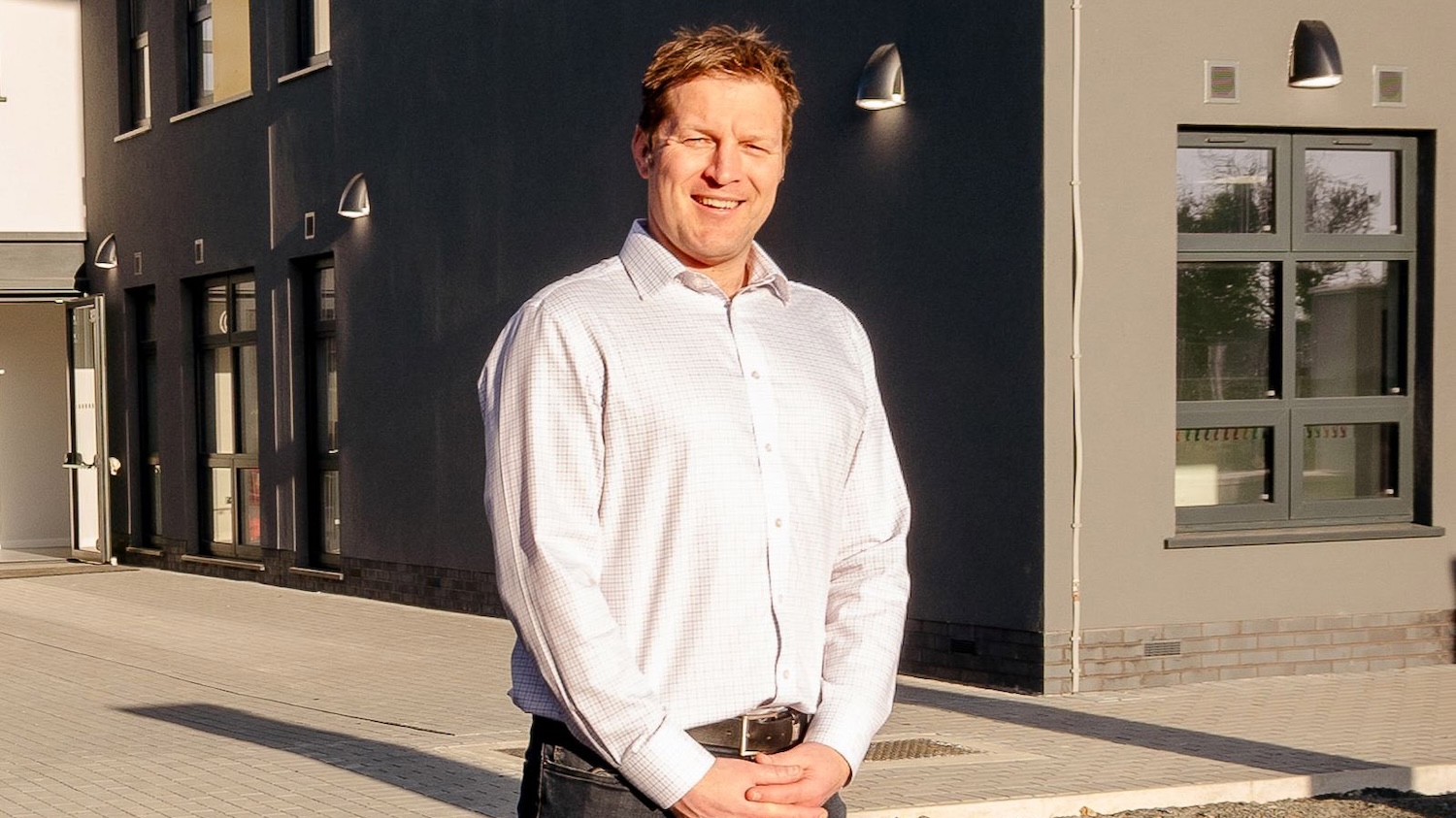
Construction SMEs: scaling up the workforce
How can SMEs bolster their skills resources after securing a major contract?
A major contract win can provide a welcome boost for construction SMEs – but it brings a unique set of challenges for employers and HR leaders as they try to scale up their workforce.
The Federation of Small Businesses published a survey in 2022 that showed 78% of small businesses that had tried to recruit in the previous 12 months experienced difficulties due to a lack of individuals with relevant qualifications, skills and experience.
Worryingly, persistent skills shortages and increasing employment costs continue to plague SMEs.
Latest FSB figures show a decline in small business confidence – falling to -10.8 points in Q2 2024, compared with +5.5 points in Q1.
Of those surveyed, construction SMEs were the least optimistic, compared with other sectors, with a score of -20.7 points, largely attributed to employment costs, as well as concerns that the lack of skilled staff is a barrier to growth.
Recent government data has also revealed that around 244,000 qualified apprentices will be required to fill the skills gap by 2032.
Struggling to recruit
Robbie Blackhurst, founder and chief executive of built environment software company Compliance Chain, identifies this lack of skilled workers as the primary challenge for employers aiming to scale up their operations.
He adds that the recruitment process can be lengthy, in part “because the pool of quality candidates is so dry”.
“When they do eventually get new recruits on board, companies then experience difficulties in effectively balancing the costs associated with rapid jumps in hiring, with many offering competitive salaries in a bid to attract talent.”
Integration can pose further challenges, Blackhurst says, with new hires occasionally failing to “properly gel with the company’s culture and team”.
Chris Haughey, managing director of McCoy Contractors, agrees that it can be a challenge for SMEs to recruit experienced and fully qualified staff – or to upskill current employees – to meet the increased demand that often follows a big contract win.
“Many years ago, careers in construction were incredibly popular with people leaving education after secondary school,” he says.
“Often, people would follow the career paths of friends just because the built environment was seen as the go-to industry to start a career in. However, in recent years, young people haven’t seen groundworks as a lucrative career.”
Skills crisis and recruitment

There is a limited pool of talent coming into the industry and the reactionary nature of our industry makes it more difficult when you are looking for people
Business coach Maria Coulter agrees that skills shortages can cause complex recruitment challenges following a successful bid.
“When you’re building your workforce after a contract win, you are in a rush to bring people in to fulfil the contract and don’t always make the right hire decisions,” she says.
“There is a limited pool of talent coming into the industry and the reactionary nature of our industry makes it more difficult when you are looking for people, [and] so is everyone else.”
As a result of the skills gap, SMEs can find themselves competing with bigger companies that can offer “more attractive” packages to candidates, Blackhurst says.
“This prompts SMEs to drive up wages in a bid to remain competitive, which makes it more expensive to hire the necessary workforce, thereby impacting budgeting and financial planning,” he explains.
“On top of the added hiring costs the skills crisis has brought, SMEs also spend more time trying to fill positions, with the right candidate often proving difficult to find.”
Balancing the budget
Haughey believes that providing existing or new employees with financial incentives to work for an SME is “incredibly important” – but he stresses that it is “vital not to over-extend the budget, which could potentially lead to other financial issues in the future”.
SME employers often seek the assistance of recruitment agencies but this can lead to increased expenditure on the recruitment process.
“Additionally, seeking to employ candidates from external sources will often mean inflated wages,” Haughey says.
“Indeed, attracting new employees from other companies means offering them better wages than they are on currently, leading to increased costs for the new employer.”
At times, companies may be forced to hire “underqualified personnel”, Blackhurst says, if they need to fill positions urgently. This can, in turn, affect quality of work.
He adds: “Where deemed necessary, many companies have also had to increase their reliance on using subcontractors to meet project demands. Again, this can prove expensive, and pose new risks to quality control.”
Haughey says that while the construction industry has many “talented and experienced subcontractors”, McCoy Contractors prefers to directly employ workers.
Internal solutions

Offering comprehensive and ongoing training throughout a career can not only improve the individual’s knowledge and skills but also highlight a more progression-focused approach to attract new professionals from outside the company
Overall, external recruitment can often be a “time consuming and costly affair”, Haughey says, and it may be better for SME employers and HR leaders to develop training programmes for their staff.
“With these challenges in mind, it’s important that the construction industry looks inwards at how employers and HR leaders can scale up workforces while addressing these issues and establishing effective recruitment and retention strategies,” he says.
Blackhurst believes SMEs might need to “invest more time and resources into the training and development of their less experienced workers, bringing them up to the necessary standard”.
Indeed, there are significant benefits to providing consistent training opportunities.
Haughey explains: “Offering comprehensive and ongoing training throughout a career can not only improve the individual’s knowledge and skills but also highlight a more progression-focused approach to attract new professionals from outside the company.”
Encouraging younger employees to progress also provides job satisfaction, gives them a “clear path through their career” and nurtures a supportive culture, he adds.
McCoy Contractors has found that mentorships can enable younger staff to learn from more experienced members of the team – and Haughey sees scope for apprenticeship schemes to also play a role going forward.
“By encouraging young people to begin careers in the built environment through apprenticeships, training can begin early in their development and career paths can be set up,” he says.
He adds that the industry needs to do more to educate young people on the careers available and the “exciting and rewarding opportunities” the industry can offer.
Positive steps
Another solution is to improve engagement with schools and colleges. Through a “proactive approach” to recruitment, SMEs can establish rewarding partnerships with educational institutions and training programmes that create a pipeline of future workers, Blackhurst says.
“This can greatly mitigate many of the recruitment and development challenges that firms are facing and ensure that a strong pool of talent is close at hand.”
Top tips for construction SMEs
- Invest in employee development to improve skills and increase job satisfaction and loyalty
- Leverage new technologies in the recruitment process to save time, reduce costs and boost productivity
- Cultivate a positive and inclusive workplace culture that provides a supportive environment where employees and their wellbeing are valued
- Develop a strategic workforce plan that allows for fluctuations in labour demand – for example, have a mix of permanent and flexible contract arrangements to scale up or down based on project needs
- Make sure you have a process in place to consistently fill your pipeline so you’re confident you have the workload in place to support recruitment
- Find time to work on your business and identify where you may be losing profit – this will give you budget to feed back into your business and support recruitment
- Be clear on your brand and why someone should work for you
There is also a role for technology: using recruitment-based digital tools and platforms can help SMEs reach a broader audience.
Companies can establish a digital pool of industry-specific candidates, customise the screening process to reflect the specific needs of different construction roles and use peer review screening to validate a candidate’s skills and suitability.
Blackhurst says: “[These] platforms give firms the power to carry out a whole host of different functions to streamline the recruitment process and find quality candidates both quickly and affordably.”
Attracting employees
For Coulter, taking the time to work on your business and set goals and targets is “hugely important”.
“Having a financial goal helps you identify what you need to fill the pipeline, which will then help you decide what hires you need to make in the next 12 months,” she says.
“Also, when competing for talent, it’s crucial to work on your brand. What sets you apart from your competition, why should someone work for you over your competitor? What are your core values and what is the culture like in your organisation?
“These are all big questions that need to be answered to attract the right talent. Making sure you are considering equality, diversity and inclusion in your recruitment policy is a must.”
Many jobseekers also pay close attention to whether SMEs offer flexible working, Haughey says.
Overall, he believes that with the industry needing more than 200,000 new professionals to meet UK construction demand in the coming years, it must “look inwards at what can be done to not only attract new talent but also retain those already in the sector”.
He adds: “Utilising effective recruitment and retention strategies will not only help to avoid potential labour shortages but also reduce costly project delays.”







